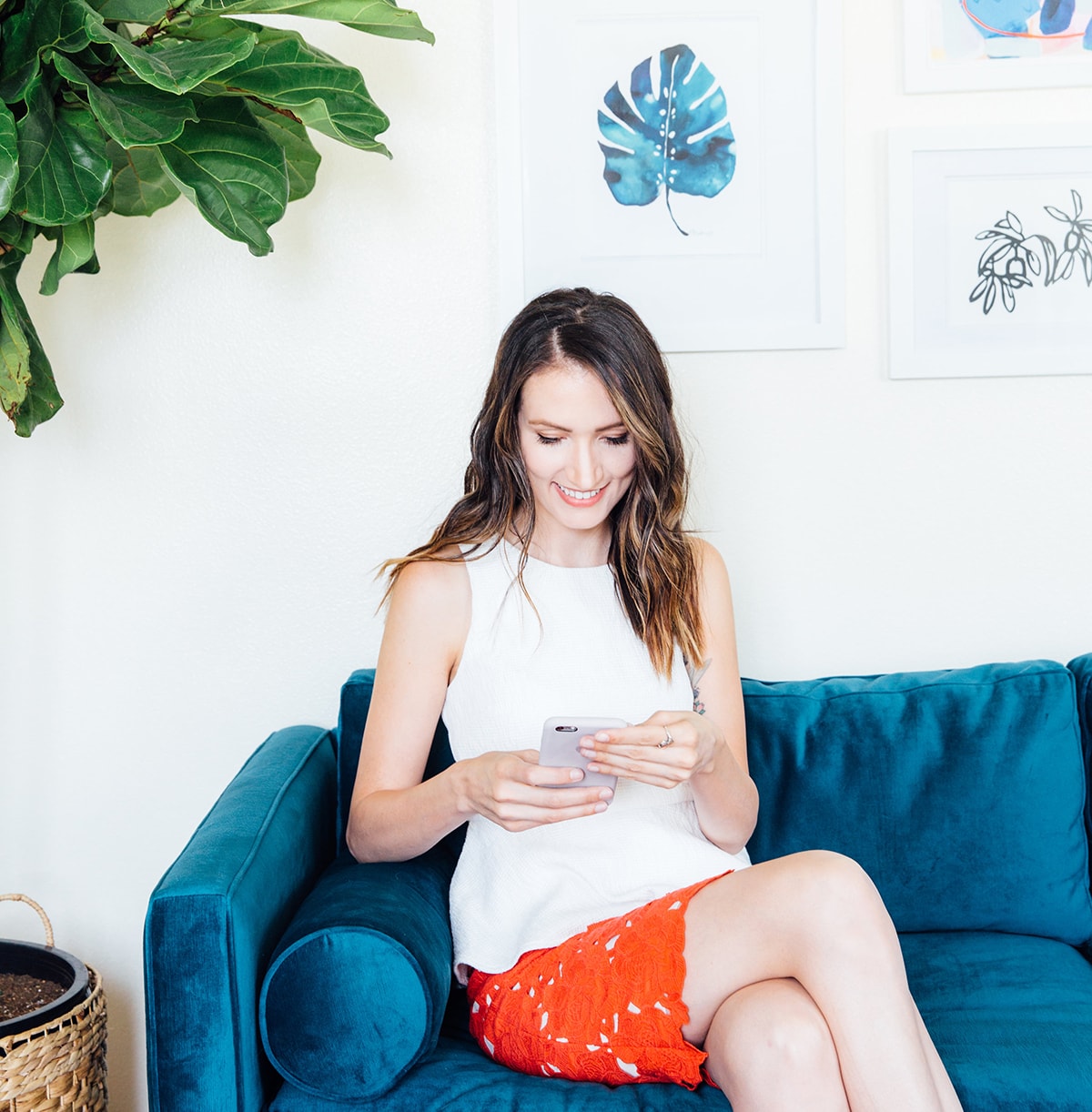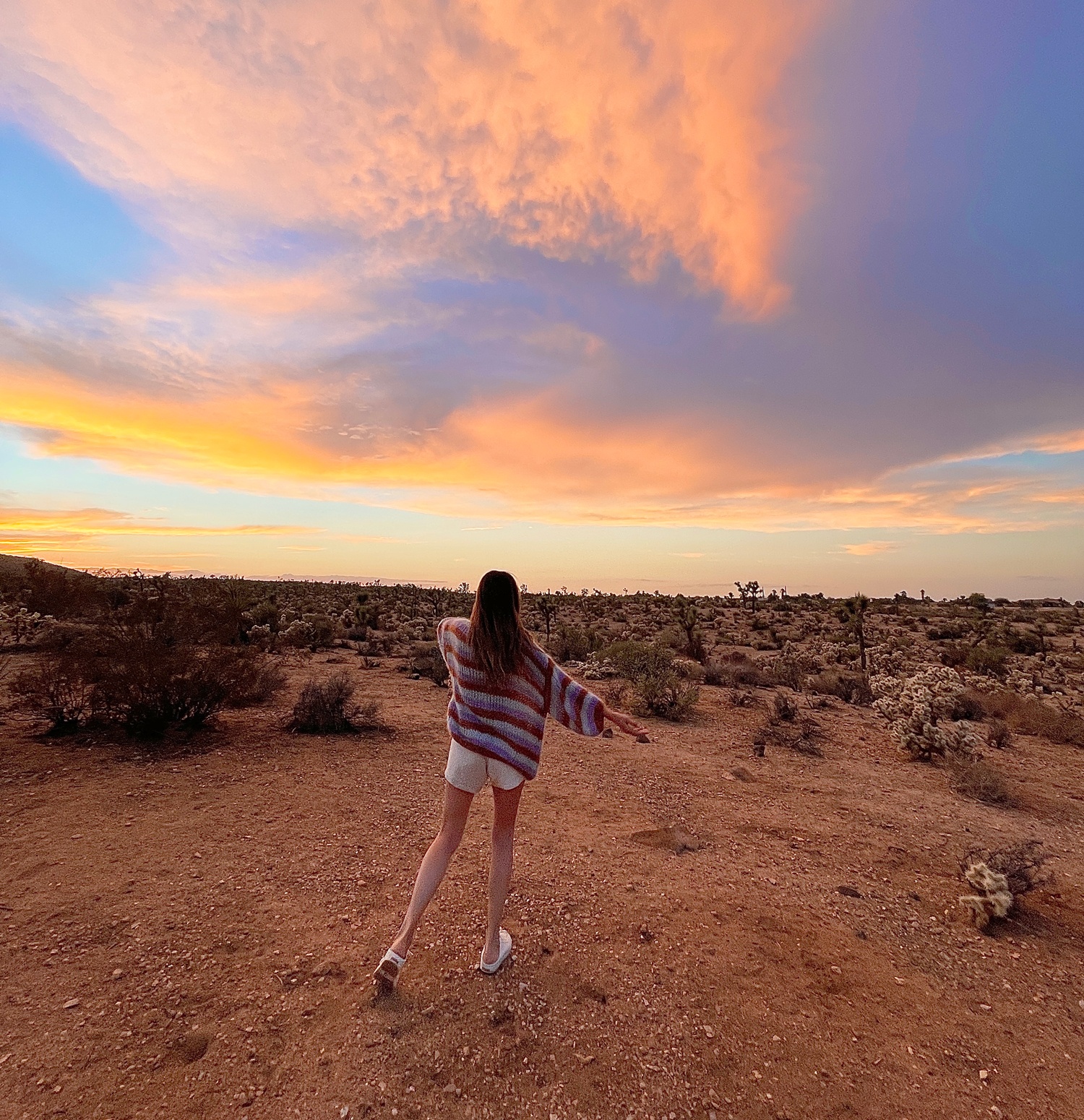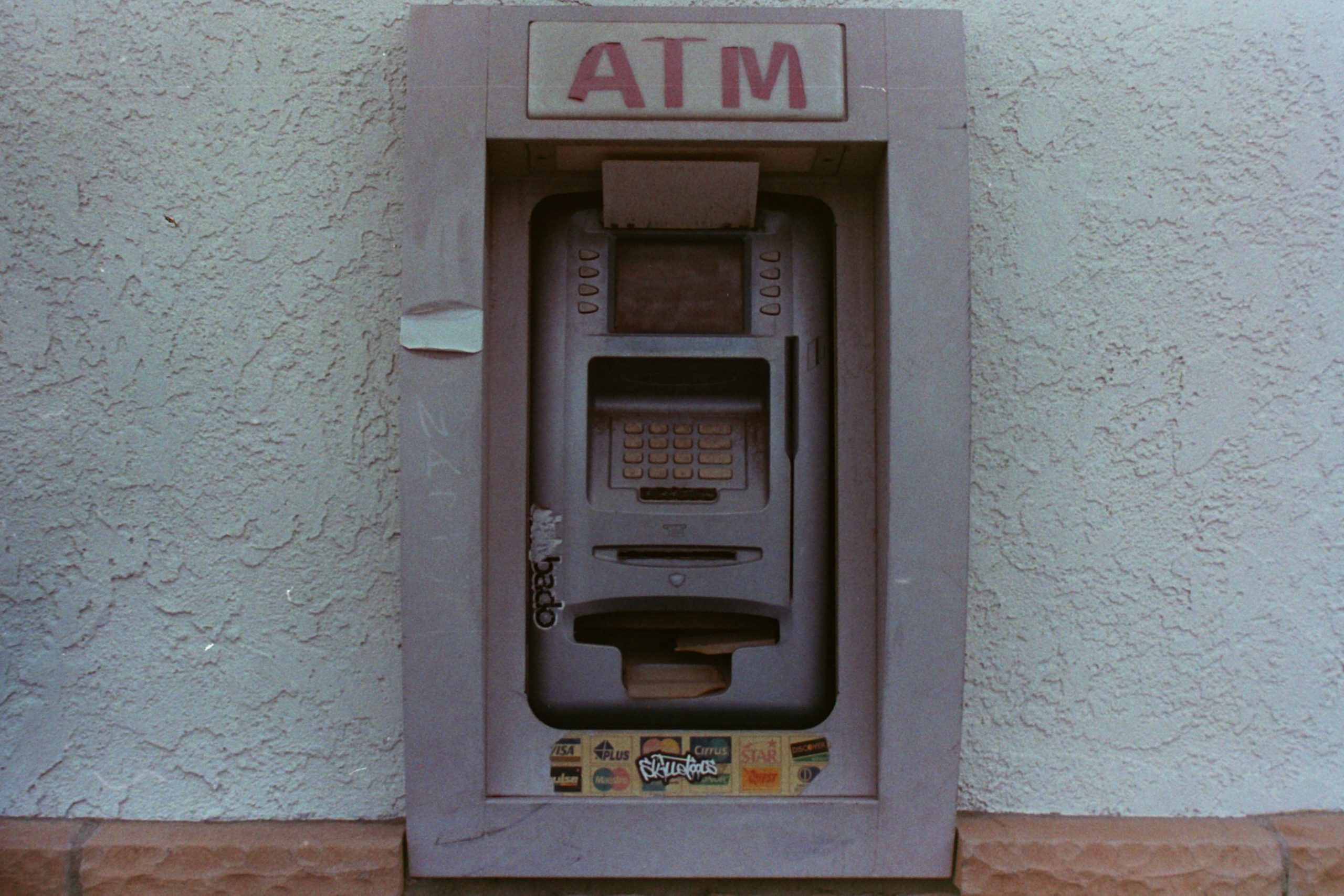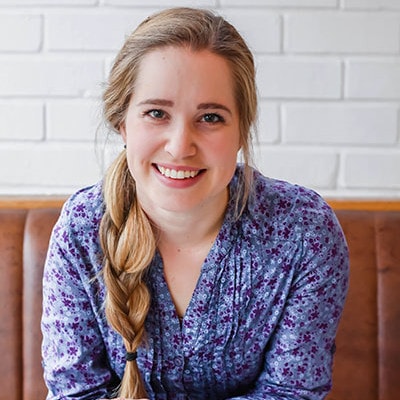Whoa whoa whoa. So I’m a *little* late on June’s income report, but I think the saying goes, “better late than never,” yes? 😉
I’m excited to share this report with you for a couple reasons:
- It was my highest revenue month in business. Par-taaaay!
- I had my biggest e-course launch to date. I want to share some valuable nuggets that helped the launch so that you can apply them to your own launches.
- I’ve got some personal insights and *feelings* that I want to share with you.
Why do I do income reports?
I started doing income reports as a way to be more transparent about my business and hopefully shed some light on ways that you can grow your own online business, too. I want to show you both what worked for me and what didn’t so that you can apply those lessons to your own dreams. My overall hope is that my income reports inspire or inform you to create and grow your own online biz.
Let’s do this!
June Income
- E-Course Sales: $130,553
- Affiliate Income: $9,346
- Ad Revenue: $62
Total Income: $139,961
June Expenses
- PayPal + Stripe Fees: $4,160
- Teachable*: $299
- Gusto Payroll Software: $28
- WebinarJam Software: $297
- Edgar Social Media Scheduler: $245
- Facebook Ads: $2,521
- Independent Contractors: $5,708
- Conferences + Books: $638
- LeadPages Template: $18
- Deadline Funnel: $37
- Zapier: $20
- Infusionsoft*: $717
- Affiliates: $2,221
- Stocksy: $15
- Business Travel: $1,589
- Office rent, utilities, + insurance: $1,110
- Google Apps*: $17
Total Expenses: $19,640
(Anything with an * next to it is an affiliate link)
Net Profit: $120,321
Payroll to Melyssa: $8,611
So what worked? And how was June? Let’s chat.
Blog to Biz Hive Launch: What You Can Learn From It
The BIGGEST thing that happened in June was the re-launch of my course, Blog to Biz Hive. BBH is an in-depth program, which shows bloggers and content creators how to grow their traffic and email list in order to launch a successful e-course to their audience.
Previously, my biggest launch to date was for the same course. That launch did about $100,000 last December. My goal this time around — about six months later — was to hit $250,000.
And.we.did.it.
In the end, we hit about $275,000 in revenue during the relaunch of the course and welcomed over 400 new students into the program. In-sane to me! Now, many of those students are seeing success and advances in their blog businesses. I love the heck out of it.
A few things that helped us hit this goal:
1. I launched a free, 3-part video series. I’ve never done a 3-part video series before, though I’ve been aware of this strategy for awhile and have heard from others that had success with it. The gist is that you create three high-value, non-salesy videos that are sent out every couple days to your registrants and teach concepts that relate to your course. After that, you send a fourth video, which is where you can pitch your product.
The video series felt like a behemoth to create — hah! But as soon as I released it, people started leaving a lot of comments about how deeply it helped them (almost 400 comments in total — whoa!). It made me feel SO good to create something that not only promoted my course, but gave my audience a free resource whether they enrolled in BBH or not.
In the end, 54% of the people who enrolled in Blog to Biz Hive had watched the free video series. It’s likely that some of those people would have enrolled without the series, but I’m sure it helped and I felt good about adding it to this launch.
2. My email list had more than doubled since the last launch of this course. One of the best lessons I’ve learned over the past year is that an email list is an essential part of a successful online business. As soon as I figured this out, I began to earnestly grow my list. By the time the launch rolled around, I had about 48,000 subscribers on my list, which no doubt played a huge role in helping me hit my revenue goal.
By the way, if 48,000 subscribers sounds like it would take years to reach, then consider that 12 months prior, I had about 5,000 subscribers, meaning my list grew by almost 45,000 subscribers in one year.
This is largely due to the Pinterest strategy I use and teach, which attracts heaps more people to your website and email list. I share my entire system in my course, Pinfinite Growth.
3. I produced a LOT of free content before and during the launch. Dare I say, it was almost TOO much content. I did four weekly blog posts leading up to the launch, almost two weeks of daily Periscopes/Facebook Live calls, a daily Instagram series with tips, three completely different webinars, a free cheatsheet, as well as the three-part video series. I literally don’t know how I did all of that without going bat sh*t crazy. ????
What’s the point of creating so much free content? Well, a few reasons:
- People need a sample of what they’re signing up for. This means that if you, all of a sudden, unleash this expensive program on them, they probably won’t be into it since they don’t know enough about you, your teaching style, or the level of value you give. By providing free content, you’re showing them just how much knowledge you have on the subject and how you can help.
- You’re preparing them for two weeks of promotion. Receiving emails and sales pitches can turn a lot of people off, especially if that’s ALL they receive. So, by giving them free value up front and during your launch, you’re balancing out the promotional period with some sweet freebies. This creates a happier and more engaged community.
- I like making money, but I also get fulfillment from simply helping people. I know that not everyone can afford my course, but I still want to give them free value so that they can get started where they are.
Now, do you need to create this much content for your own launch? No ma’am! For my first e-course launch, I shared much, much less content, but still earned about $30,000 within 30 days.
If you’re still figuring things out or preparing for your very first launch, don’t feel like you have to commit to all of the above. Start with something smaller, like one webinar, a few emails, and some social media promotions. You’ll learn a LOT just by getting started and you’ll gain the momentum you need to do more extensive launches in the future. #trust.
On hitting monetary goals (and what that does and doesn’t mean)
My monetary goal for 2016 was to hit $500,000, which would be double what I did in 2015, and it honestly scared the sh*t out of me to set that goal (especially when I calculated how much I’d need to earn each month to hit that!).
But ever since switching to e-courses full-time and putting a strong focus on growing and engaging with my email list, things have shifted dramatically in my business. We almost hit $500k in the first 6 months of this year, and now I think it’s realistic that we’ll hit at least $1 mil by the end of 2016.
A few personal thoughts about money:
1. Someone left a comment awhile ago asking what I DO with the money I earn. Like, do I live lavishly and buy whatever I want? No, not really. I splurge from time to time, but I still drive a Honda CR-V, eat cheap indian delivery food on a weekly basis, and live in a neighborhood in LA where I avoid walking around alone at night. And don’t get me wrong — I do buy some nice things from time to time — but overall my lifestyle hasn’t changed much.
2. I took a Japanese language class over the summer and during the class, we had to do a speaking exercise where we talked about what we want our future to look like. One person said, “I want to be okanemochi!” A rich person. And then everyone else in the class said, “Ahhh yeah, me too!!” I definitely don’t consider myself “rich,” but I do make more money than I ever expected to make in my life, let alone my 20s. Sometimes it makes me feel illegitimate, like why do I deserve to make all of this?
When that moment happened in the class, it made me wish I could say something aloud without sounding like a pretentious nut: having money doesn’t mean you’ll have a great life. It just means that you have more money. And there are no amount of things you can buy that will bring you happiness — you have to make that part happen on your own.
Basically, I don’t think chasing money should be the end goal (and I’m sure you are bombarded with people — even me — who share their revenue and make you feel like you need to earn MORE). I think money is a piece of the puzzle (and certainly something I enjoy making), but there’s so much else that contributes to our happiness and feelings of fulfillment than a sexy bank account.
I am so, SO grateful that my business is doing well and growing and even providing jobs for other people (what?!). It brings me so much joy. But in the beginning, I think I pressured myself to hit monetary goals because I thought money = the good life.
But running a successful business is not the same as running a successful life, and if you want success in both, you have to work on both on a daily basis. You may be thinking, “I already know this!“…but do you practice it — balance and personal joy — on a daily basis?
So, this is my reminder to me and to you to set business goals and work hard to reach them, but don’t approach them as the “end all, be all” or the thing that will bring you complete personal satisfaction.
That level of inner confidence and joy comes from having passions outside of your business, constantly focusing on personal growth and gratitude, and never forgetting that money can only bring us to a certain level of happiness — we have to take ourselves the rest of the way there.
And if you’re feeling less-than because you haven’t hit your income or business goals yet, then remember that when you DO hit those goals, you probably won’t suddenly feel like everything is great if you’ve been neglecting the rest of your life. It’s like drinking a green smoothie every morning in order to be healthy, and then eating junk food the rest of the day. Our lives need balance, and your business’s success is just one ingredient of your beautiful life.
Here’s how you can take action:
One of the things I love about the spiritual entrepreneur, Danielle LaPorte, is that she helps people shift their perspective from “what do you want to achieve?” to “how do you want to feel?” So, given my thoughts above about finding balance in life and business, I want you to ask yourself the same question.
How DO you want to feel in your life?
And what can you do — both in your business and in the rest of your time — to make yourself feel that way? What do you have to do in order for those feelings to emerge? How much of your happiness is determined by your business’s growth and success, and what other parts of your life need to be nurtured or healed in order to unleash your fullest self?
Got any questions? Comments? Insights? I’m all ears! Let’s chat down below.
p.s. I also have a private Facebook group where I’d love to chat with you and answer your Qs! Click here to join.
